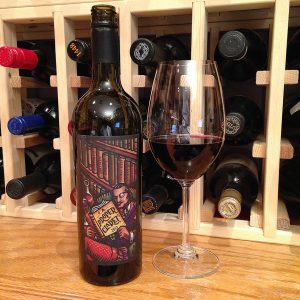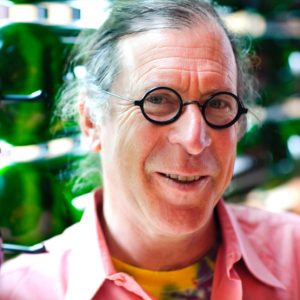Inky, deep red color; mixed red and dark fruits on the nose. Do not be fooled by the label, this is not your Englishman’s lean, structured, light fruit Bordeaux blend;
there is big fruit here with clear New World flourishes, strong tannin and dark-fruit bite, and the Left Coast cavalcade of grapes—46% cabernet sauvignon, 17% merlot, 15% tannat, 13% petit verdot, 8% syrah, and 1% petite sirah. Tannat likely contributes to the tannic edge (and massive levels of health-abetting resveratrol), joining tannic forces with the cab and overwhelming the merlot, while the syrah was partially air-dried to add spice that particularly kicks in on the finish and the petite sirah hastily throws in a dollop of its silkiness for good measure.
If you like a Bordeaux or Rhône fruit, you will likely find examples of those flavors at least lurking (several of them much more than lurking) in this interesting melange.
Very tasty in a quirky sort of way, which clearly is conveyed by the label and Bonny Doon’s reputation.
Bonny Doon has a changeling history. It started in the 1980s as Randall Grahm’s attempt to duplicate Burgundy in California, a notion soon dashed by the realization that Rhône-style blends better suited his vineyards. There was a long period of no-cab-need-apply winemaking and widely popular, campy brands—Big House, Cardinal Zin, Pacific Rim. Bonny Doon became the 28th largest winery in the U.S. And did not deliver happiness to Grahm, who cashed in and sold off the big dogs in his portfolio so he could concentrate on sustainable vineyard practices and a lighter touch in the winery.
That shift meant dropping some of oak and designer yeast tricks of the past; the website notes: “more or less eschewing vinous maquillage, (at least not to Tammy Faye Bakker-like levels).” Translation: less artificial makeup and more attention to farming delicious fruit. This is not a claret, but it is an intriguing and intriguingly tasty wine. Give it a twist (Grahm is a screwtop man). $16-17
Bonny Doon website
Second photo: Randall Grahm


